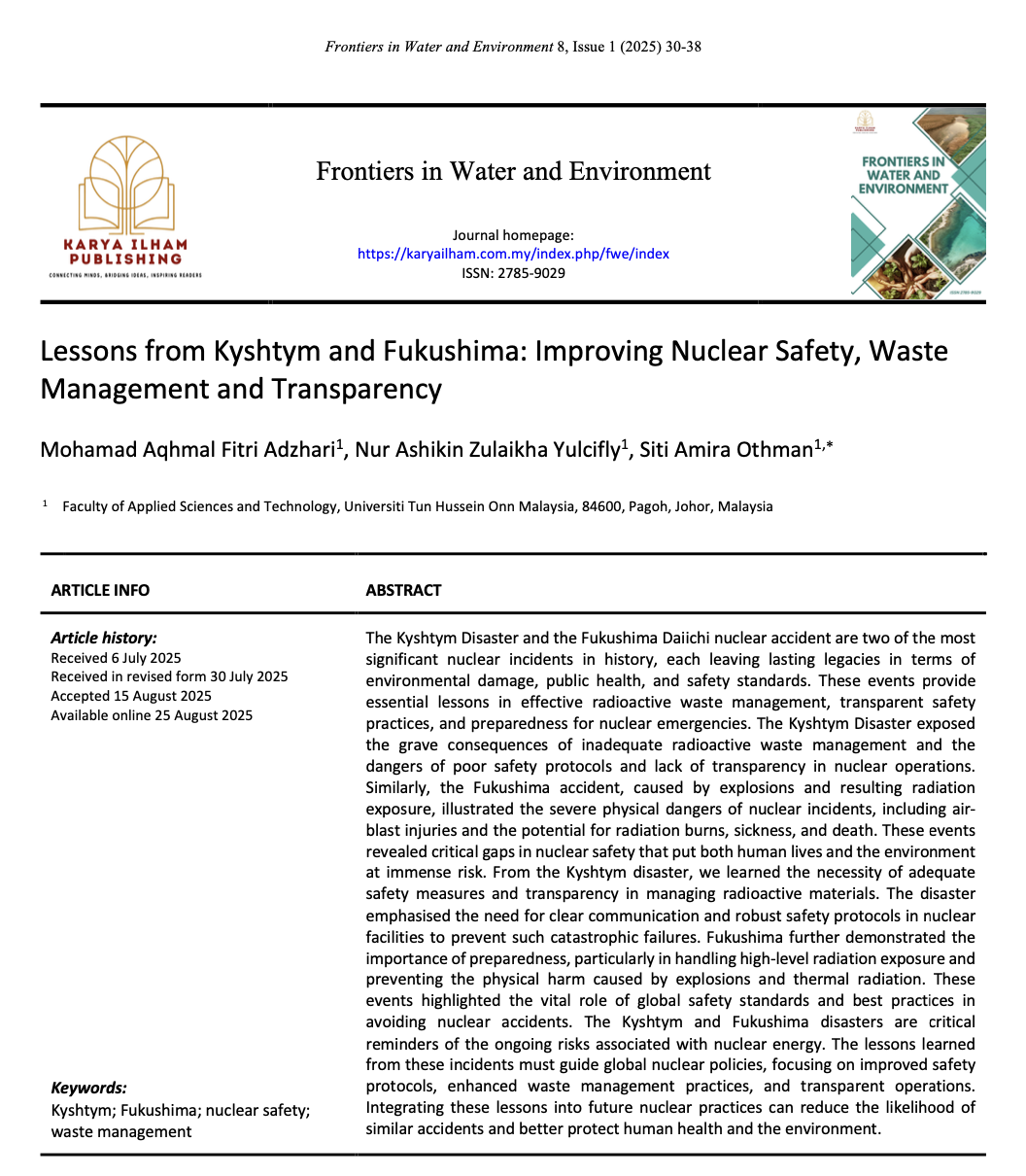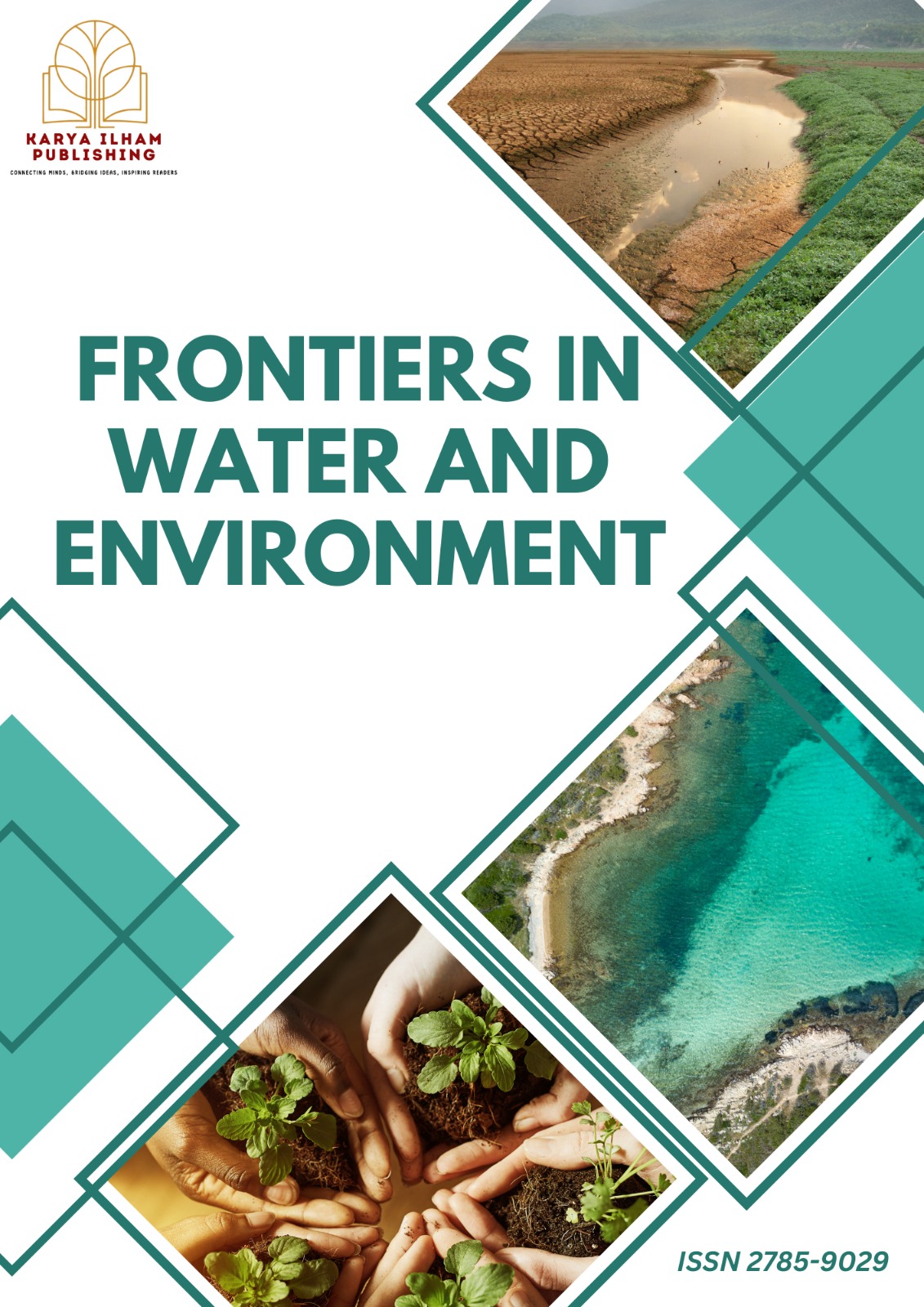Lessons From Kyshtym and Fukushima: Improving Nuclear Safety, Waste Management and Transparency
Keywords:
Kyshtym, Fukushima, Nuclear safety, waste managementAbstract
The Kyshtym Disaster and the Fukushima Daiichi nuclear accident are two of the most significant nuclear incidents in history, each leaving lasting legacies in terms of environmental damage, public health, and safety standards. These events provide essential lessons in the importance of effective radioactive waste management, transparent safety practices, and preparedness for nuclear emergencies. The Kyshtym Disaster exposed the grave consequences of inadequate radioactive waste management and the dangers of poor safety protocols and lack of transparency in nuclear operations. Similarly, the Fukushima accident, caused by explosions and resulting radiation exposure, illustrated the severe physical dangers of nuclear incidents, including air-blast injuries and the potential for radiation burns, sickness, and death. These events revealed critical gaps in nuclear safety that put both human lives and the environment at immense risk.From the Kyshtym disaster, we learned the necessity of effective safety measures and the importance of transparency in managing radioactive materials. The disaster emphasized the need for clear communication and robust safety protocols in nuclear facilities to prevent such catastrophic failures. Fukushima further demonstrated the importance of preparedness, particularly in terms of handling high-level radiation exposure and preventing the physical harm caused by explosions and thermal radiation. These events highlighted the vital role that global safety standards and best practices play in preventing nuclear accidents. The Kyshtym and Fukushima disasters serve as critical reminders of the ongoing risks associated with nuclear energy. Moving forward, the lessons learned from these incidents must guide global nuclear policies, focusing on improved safety protocols, enhanced waste management practices, and transparent operations. By integrating these lessons into future nuclear practices, we can reduce the likelihood of similar accidents and better protect both human health and the environment.










